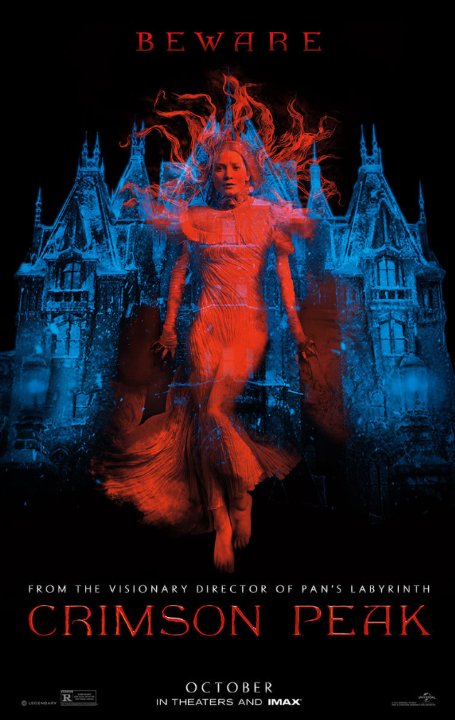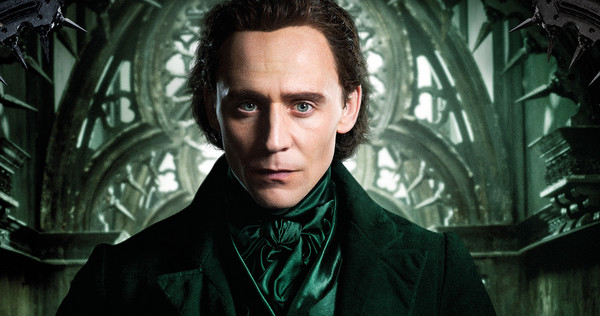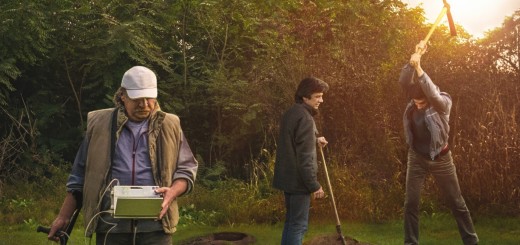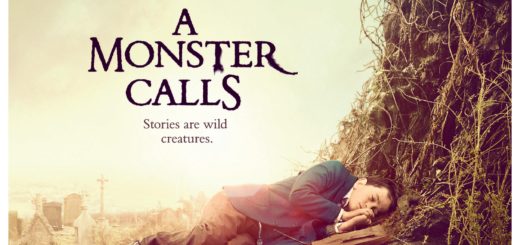CRIMSON PEAK Review
Director: Guillermo del Toro
Genre: Gothic Horror, Romance
Release: 2015
Guillermo del Toro should have never become a director—or a writer, for that matter. In an alternate dimension, del Toro is the modern, more active H.R. Giger, aiding far more skilled storytellers with his evocative, grotesque imagery. Del Toro’s works have come off as either remedial fables (the unbridled love for PAN’S LABYRINTH, largely considered the director’s magnum opus, continues to baffle) or trite, unsuccessfully subversive excursions into blockbuster fare (the equally forgettable HELLBOY and PACIFIC RIM), yet his luscious art design is unquestionably superb. A Guillermo del Toro picture feels like an elaborately set dining table adorned with askew candelabras, tortuous silk placemats, and the finest China imaginable, only to serve a half-eaten, foil-wrapped torta. CRIMSON PEAK is no different.
Actually, this is much better
Pitched not as a ghost story, but a story with ghosts in it, the supernatural are superfluous, nothing more than aesthetic justifications for the ghoulish, exaggerated production design. With a thin thematic resonance, or even a narrative sense, to the film’s apparitions, it makes it seem as if ghosts are included simply because you can’t have a haunted house without the haunts. Allerdale Hall, the manor owned by a mysterious brother and sister (Tom Hiddleston and Jessica Chastain, respectively), where burgeoning author Edith Cushing (the ghostly pale Mia Wasikowska) is whisked away after the grisly death of her father, is a production designer’s wet dream realized. CRIMSON PEAK’s enormous sets add equally hefty weight, creating a tangible reality in which the Hammer-inspired horror can run rampant without threatening the verisimilitude of the piece.
Though far from being a traditional horror flick, the spooky atmosphere is thick and unrelenting; del Toro is more concerned with capturing tone than emotion. This is ever so evident in the central, limp romance, a bizarre love triangle predicated on extreme passion that feels colder than a corpse’s touch. Wasikowska and Hiddleston have thoroughly unspectacular chemistry, their relationship at the service of plot progression rather than sensual pathos; a disappointment following del Toro’s previously quoted promise of a kinkier than usual turn-of-the-century courtship. Worse, the last third of the film is almost entirely motivated by the (nonexistent) passion of the film’s romance(s), leading to a devastatingly hollow conclusion that wholeheartedly fails to communicate what it wants to about intimacy, remembrance, and authorship.
It’s a shame, considering how vital and vibrant he looks
While atmospheric, the ideas in CRIMSON PEAK aren’t anything groundbreaking, not even its major twist. Familiarity reigns in this gothic horror house, the filmmaker’s inspirations, be it Bava or Kubrick, worn on his gaudy sleeves. At a meaty two hours and left only with the most bare-bones of characters, there’s not much to take from CRIMSON PEAK besides a moody screensaver. Del Toro is a proven cineaste, his enthusiasm for the craft oozing like red clay from the manor’s walls, his earnestness both adorable and admirable, but no one man can get by on fervor alone.
What a shame about the cancellation of SILENT HILLS, the creative merger between gaming legend Hideo Kojima and del Toro, a shame made even more potent by the imagery in CRIMSON PEAK. Curiously, some of the imagery from P.T. (think: bathroom door, surprise in the sink, first glimpse of Lisa) is borrowed (or vice versa) to make for some of this picture’s most effective spooks. While del Toro haphazardly added horror to his latest, the gonzo narrative machinations Kojima is capable of would have put the Mexican maestro’s nightmarish illustrations to expert use. R.I.P.
Verdict: Do Not Recommend






